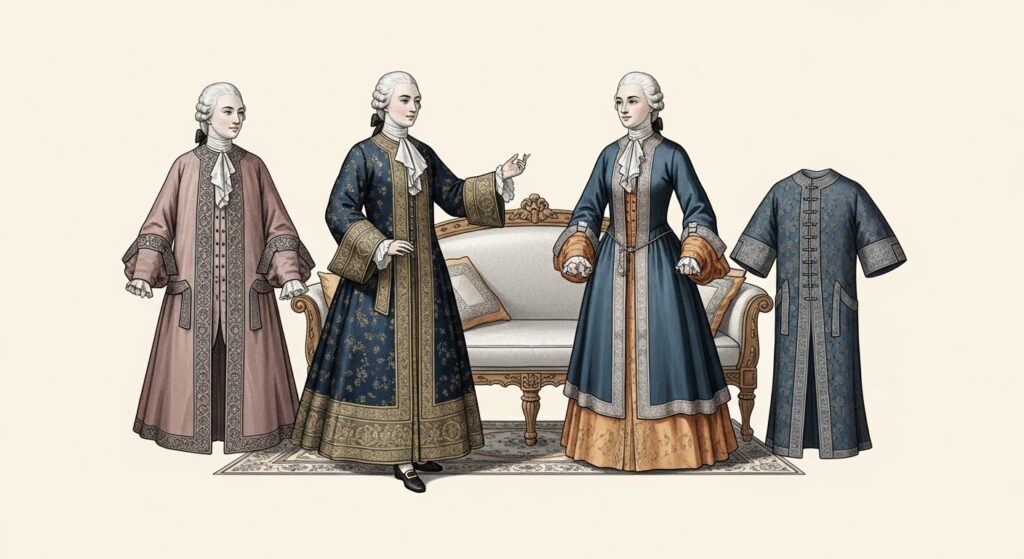In today’s interconnected world, understanding the roots of everyday language reveals fascinating stories of cultural exchange, trade, and history. Few words we casually use daily carry as much global history as pajama and khaki. Both words trace back to the same linguistic source, connecting us to centuries of tradition, colonial encounters, and cross-cultural communication.
This article explores the language from which we get pajama and khaki, the historical context of these words, and why they highlight the enduring influence of cultural interactions on modern English.
What Is the Language from Which We Get Pajama and Khaki?
Both pajama and khaki originate from Persian and Urdu/Hindi linguistic roots, reflecting the rich tapestry of South Asian culture. Specifically:
-
Pajama comes from the Hindi/Urdu word pāy-jāma, meaning “leg garment,” combining pāy (leg) and jāma (garment or clothing).
-
Khaki derives from the Urdu word khākī, meaning “dust-colored” or “earth-colored,” from khāk (dust).
These terms were introduced into English during the British colonial period in India, when British officers and traders encountered local clothing and terminology. Over time, these words were anglicized, eventually entering mainstream English with slightly altered pronunciations but preserved meanings.
Understanding these words illustrates how language travels along the paths of history, commerce, and colonial exchange, leaving a lasting imprint on modern vocabulary.
Historical Context: Pajamas and Khaki in Colonial India
When the British arrived in India, they encountered a climate and lifestyle vastly different from their own. To adapt, they adopted local clothing:
-
Pajamas: Loose-fitting trousers became standard attire for comfort in India’s hot climate. British officers and civilians referred to them as pajamas, a direct adoption of the local term.
-
Khaki: Originally a military uniform color in India, khaki allowed soldiers to blend with dusty landscapes during campaigns. It became a practical choice, and the term entered English military language.
These adoptions were not merely linguistic; they were cultural and functional integrations, showing how language and material culture travel together.
The Linguistic Journey
The journey of these words from Persian/Urdu/Hindi into English demonstrates the power of linguistic exchange. Consider:
-
Phonetic Adaptation: English speakers slightly modified pronunciations, leading to “pajama” instead of pāy-jāma and “khaki” instead of khākī.
-
Semantic Retention: Despite the pronunciation changes, the original meanings largely remained intact. Pajamas retained their association with comfort and leg garments, while khaki continued to describe a specific color.
-
Cultural Diffusion: These terms exemplify how English absorbed words from colonial encounters, creating a richer, more global lexicon.
Through these examples, we see that language is not static; it evolves with social, cultural, and historical contexts.
Modern Usage and Cultural Impact
Today, pajama and khaki are commonplace in English:
-
Pajamas: Once a colonial-era adaptation, today pajamas are synonymous with sleepwear worldwide. They symbolize comfort and personal space.
-
Khaki: Initially a military necessity, khaki now extends to fashion, casual wear, and even business-casual attire.
Both words demonstrate the ongoing impact of cultural exchange. They remind us that ordinary vocabulary can carry rich histories of adaptation, trade, and cross-cultural dialogue.
Lessons from Language Exchange
The adoption of words like pajama and khaki teaches broader lessons about how languages and cultures influence one another:
-
Language Reflects History: Words carry the stories of historical interactions, revealing trade, colonization, and cultural exchange.
-
Adaptation is Natural: As words travel, they are phonetically and semantically adjusted, blending with new linguistic environments.
-
Global Vocabulary: Modern English is a tapestry woven from numerous languages, showcasing the interconnectedness of human societies.
By tracing words back to their linguistic roots, we can better appreciate the fluidity and richness of human communication.
Cross-Cultural Significance
The origin of pajama and khaki also highlights broader cultural connections between South Asia and the Western world:
-
Fashion and Comfort: Pajamas introduced the concept of loose, comfortable clothing to Western audiences.
-
Practical Design: Khaki uniforms influenced not just military attire but civilian clothing trends globally.
-
Language Preservation: These words preserve elements of South Asian languages within English, even centuries later.
This cross-cultural significance underscores that language is more than a communication tool; it is a living record of human interaction and adaptation.
Why Understanding Etymology Matters
Knowing the origin of everyday words like pajama and khaki enriches our understanding of language and culture. Etymology—the study of word origins—helps us:
-
Appreciate Cultural Exchange: Words show how societies borrow, adapt, and integrate foreign concepts.
-
Understand Historical Contexts: Linguistic roots illuminate historical events, colonial encounters, and trade routes.
-
Preserve Linguistic Heritage: Recognizing original meanings maintains the connection to cultural origins.
By exploring etymology, we gain deeper insights into the subtle ways history shapes our daily lives, even through seemingly simple words.
Looking Ahead: Language as a Bridge
The story of pajama and khaki exemplifies how language serves as a bridge between cultures, eras, and continents. In our modern globalized world, this remains especially relevant:
-
English continues to absorb words from diverse languages, reflecting ongoing cross-cultural interactions.
-
Everyday vocabulary can spark curiosity about other cultures, histories, and traditions.
-
Understanding linguistic roots fosters greater empathy and appreciation for global diversity.
By exploring the origins of these words, we acknowledge the interconnectedness of human experience—past, present, and future.
Conclusion
The language from which we get pajama and khaki offers a remarkable glimpse into history, culture, and linguistic evolution. These words remind us that language is not just functional but cultural, historical, and adaptive.
From the bustling markets and colonial encounters of India to modern bedrooms and fashion runways worldwide, pajamas and khaki endure as living legacies of cross-cultural exchange. Their journey from Persian and Urdu into English highlights how ordinary words can tell extraordinary stories.
In a world increasingly connected by technology, trade, and travel, understanding the origins of words like pajama and khaki encourages us to value the rich tapestry of human communication. It is a testament to how culture, history, and language are inextricably intertwined—and how even the simplest words carry centuries of human experience.






